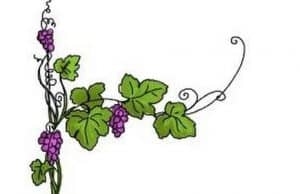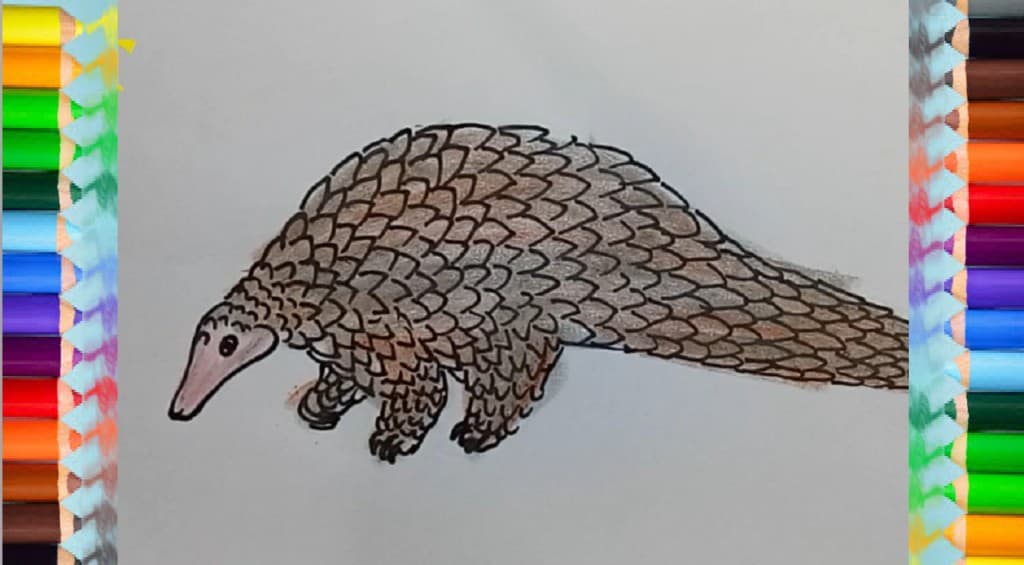How To Draw Vines and Flowers easy with this how-to video and step-by-step drawing instructions. Easy drawing tutorial for beginners and everyone.

Please see the drawing tutorial in the video below
You can refer to the simple step-by-step drawing guide below
Step 1
The trick to drawing a difficult plant like a vines is to take it slow, start small and then grow from there.
We’ll do exactly that in this step of our tutorial on how to draw vines. To start this drawing, you can start with two leaves close together.
The leaves will be quite small and rather pointed. They will also have some sharp lines inside for the veins, and this will make them look more realistic.
After these two leaves are drawn, we can start adding the vines to which they are attached.
These penalties will be drawn with several thin lines close together, and near the base of the drawing will be another small leaf. Then finish with a curving vine coming down from its bottom.
Once this step is complete, you are ready for step 2!
Step 2 – Next, draw some more leaves
To continue building your vine drawing, we’ll add some leaves to it.
These leaves will be smaller than the two main ones you drew in part 1, and since they are at different angles they will also have different shapes. However, the leaves will also have the same pattern of veins on the inside.
They will also be attached to the central vine stem from which the other stems come from, and when that looks like our reference image we can move on to the next section.
Step 3 – Draw another cluster of leaves
For this third step of the vines tutorial, we will be adding another cluster of leaves.
The size of these leaves will vary between small and large ones, but otherwise they will look very similar to the others you have drawn.
They will have the same number of spots on them as the grainy details on the interior.
For this step, you can add about 5 leaves if you want it to look like our reference image, but you can add a few more or less depending on your own preference!
Step 4 – Now draw some more leaves and vines
We will add some leaves and vines to your vines drawing in this fourth part. Start this section by drawing three more leaves, two of which will be connected in thick lines.
Then, once you’ve drawn these leaves, we’ll add some curved lines coming out from this cluster, and these will curl up into a loose spiral at the end.
Once this step is complete, we can add some final details in the next step to get you ready for some amazing colors!
Step 5 – Finalize the details and strokes of your vines drawing
The fifth step of this vine drawing tutorial will help you add sections, details and final elements to complete it in a unique way.
First, draw a thick vine stem emerging and twisting away from the top part of the figure.
We’re going to attach a few small leaves to this vine, and in addition, there will be some more spirals, zigzags from it.
That should wrap up all the details in this tutorial, but be sure to add some of your own to really bring it to life!
Vines often grow and twist onto other plants, trees, and garden structures, so you can draw something like that to show the vines are climbing something.
You can also paint a cool background for the picture and this will be a great opportunity to create a wonderful garden scene with a variety of your favorite plants and flowers.
These are just a few ideas, but what else can you think of to complete this painting of vines?
Step 6 – Complete your vines drawing with some colors
This is the final step of your vines painting process, and for this step you can bring it to life with some amazing colors!
For our reference image, we chose different shades of green for the vines, but you don’t have to choose these exact colors!
You can try some different shades or even choose a completely different color scheme if you like. If you’ve drawn any details or background additions, this is a great opportunity to color in those details.
Once you’ve chosen your colors, you can have fun choosing what art medium you’ll use to complete this painting of vines.
Whether you use paint media like watercolor and acrylic or more precise media like crayons and pencils, there are tons of options for coloring in this amazing painting!


